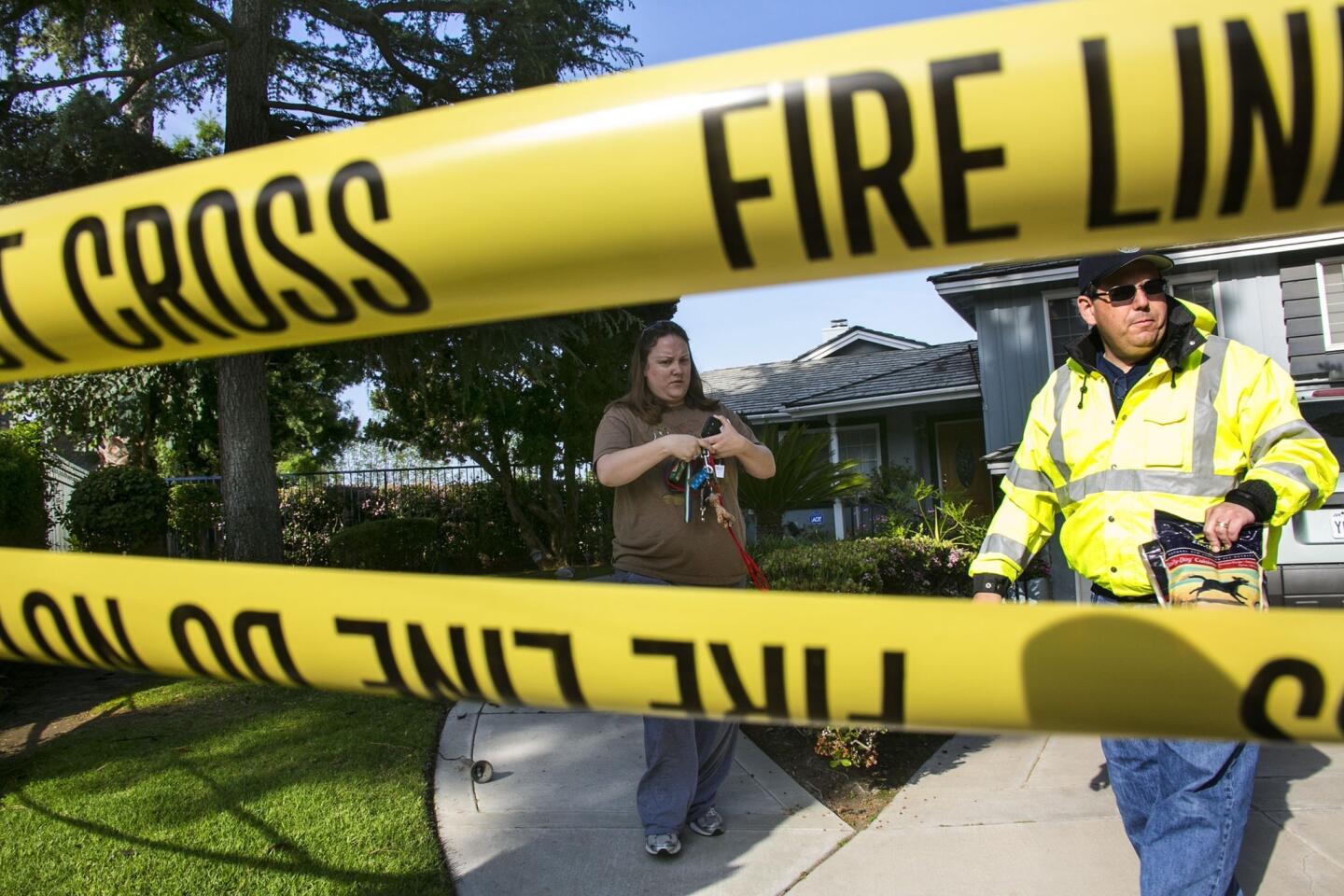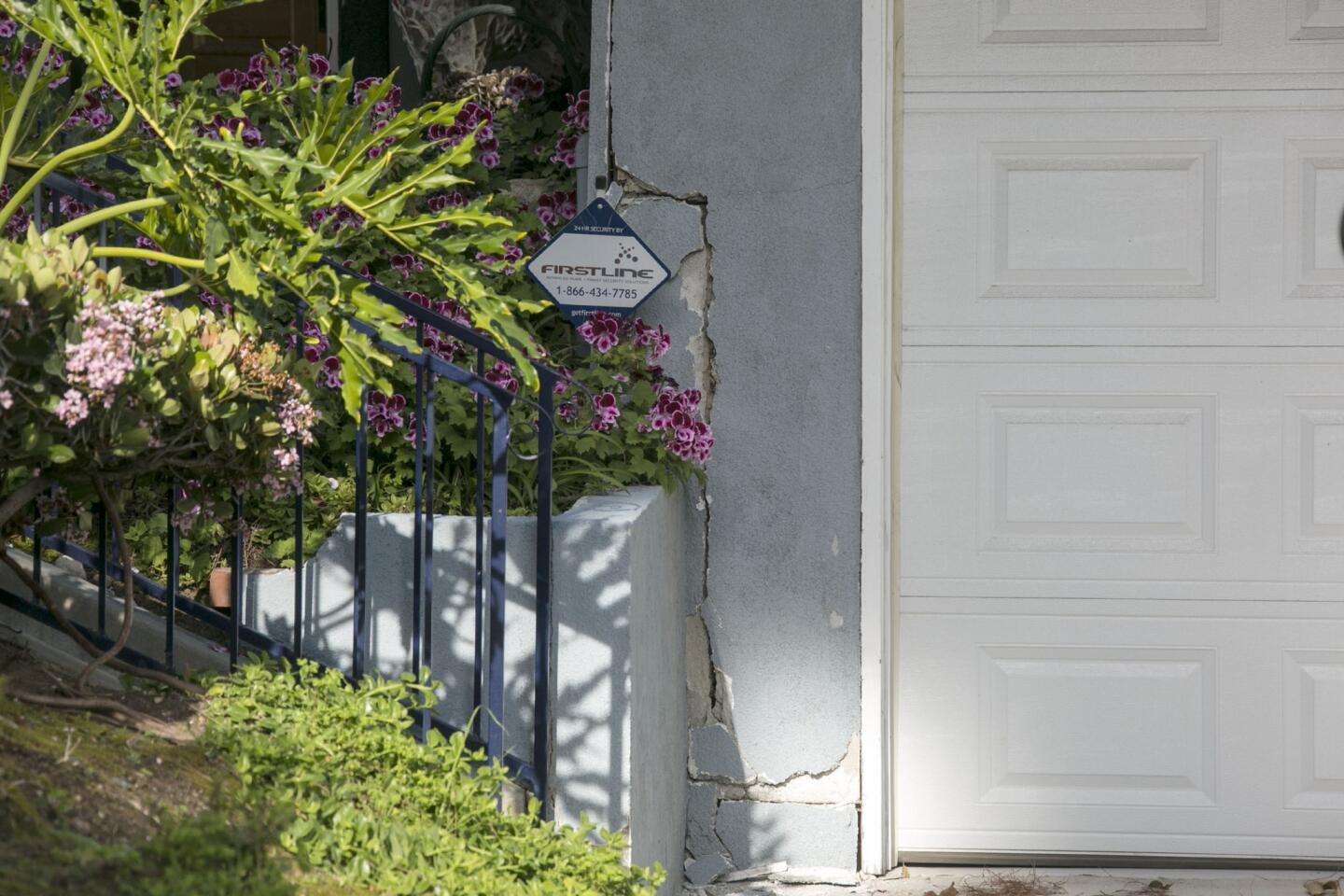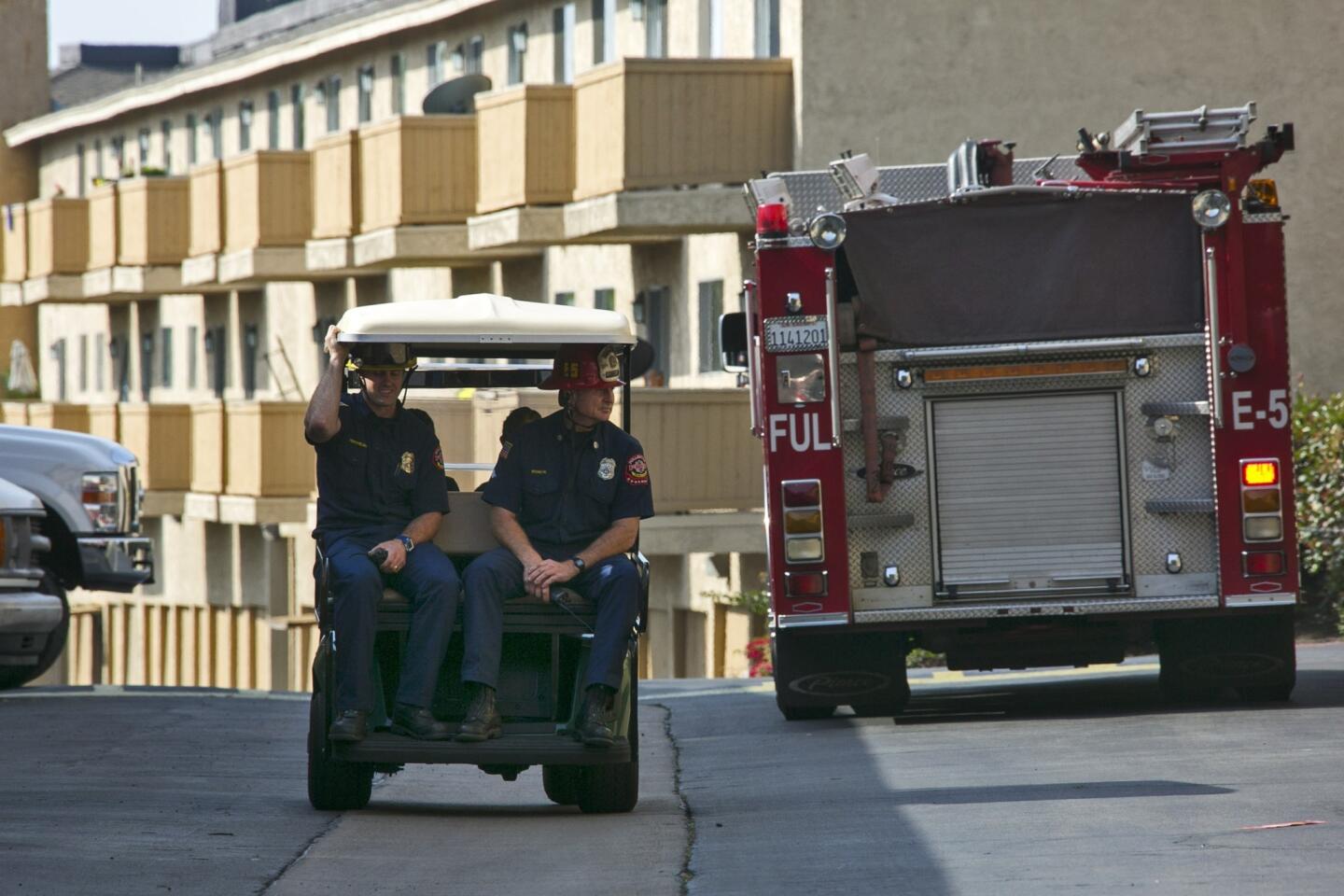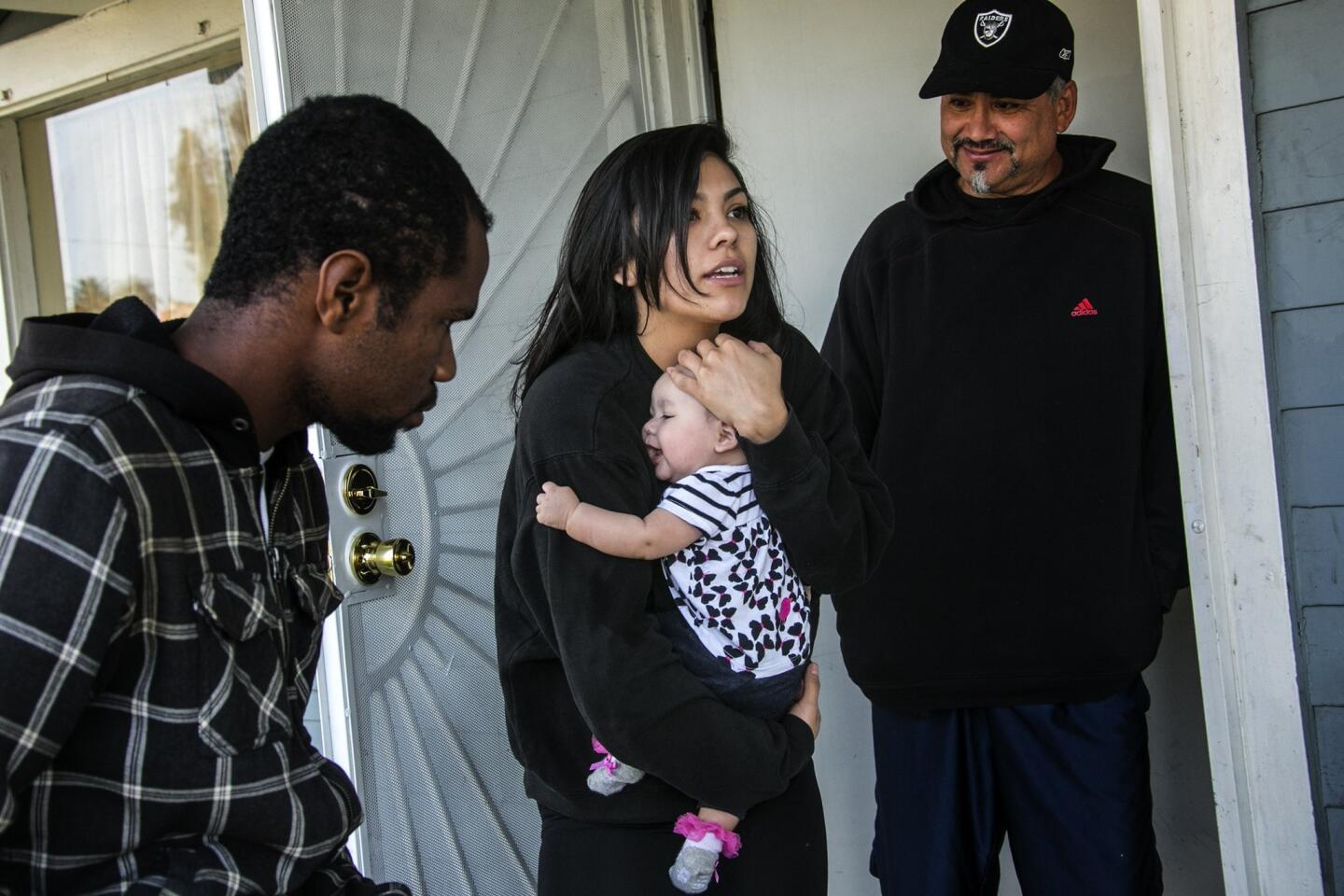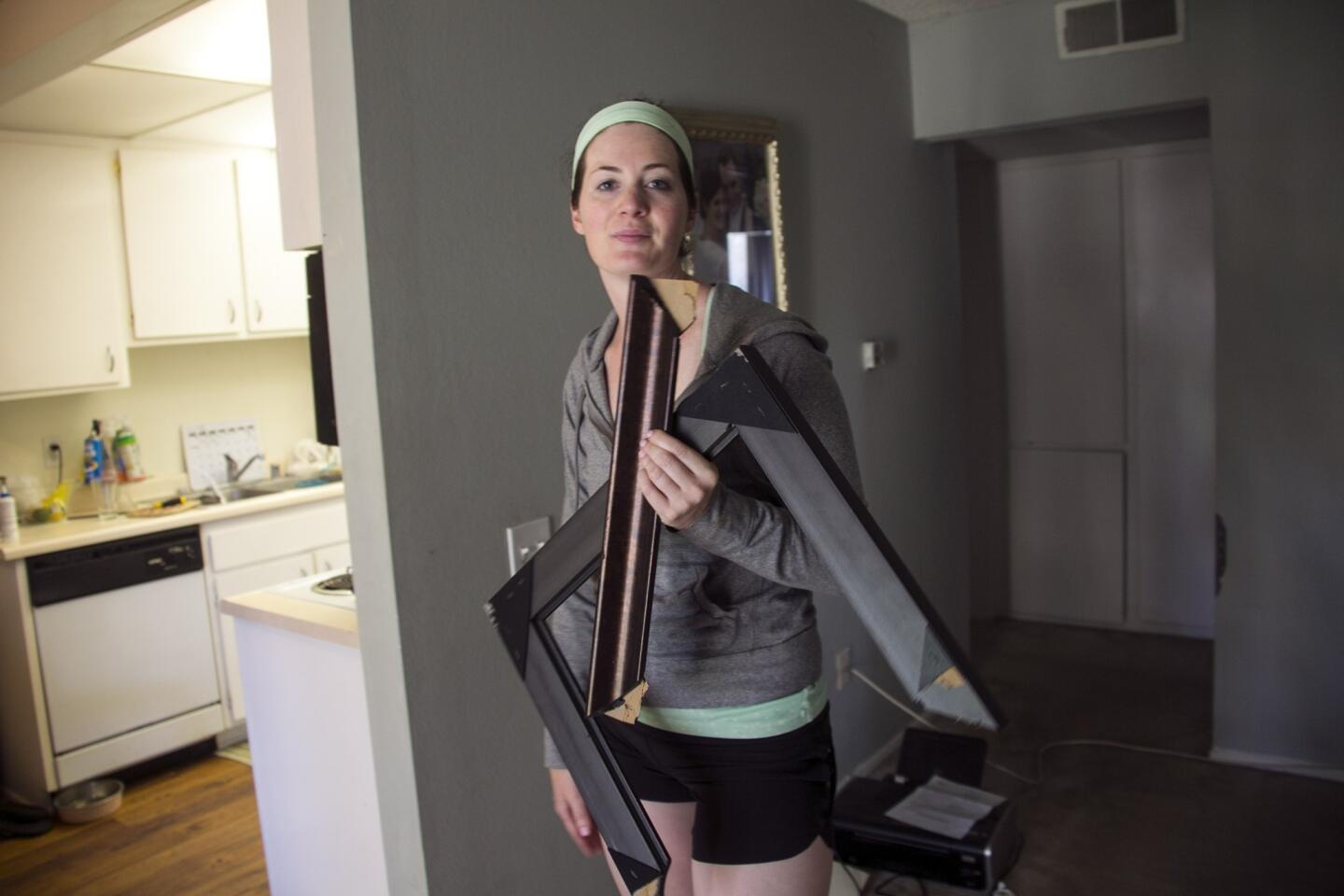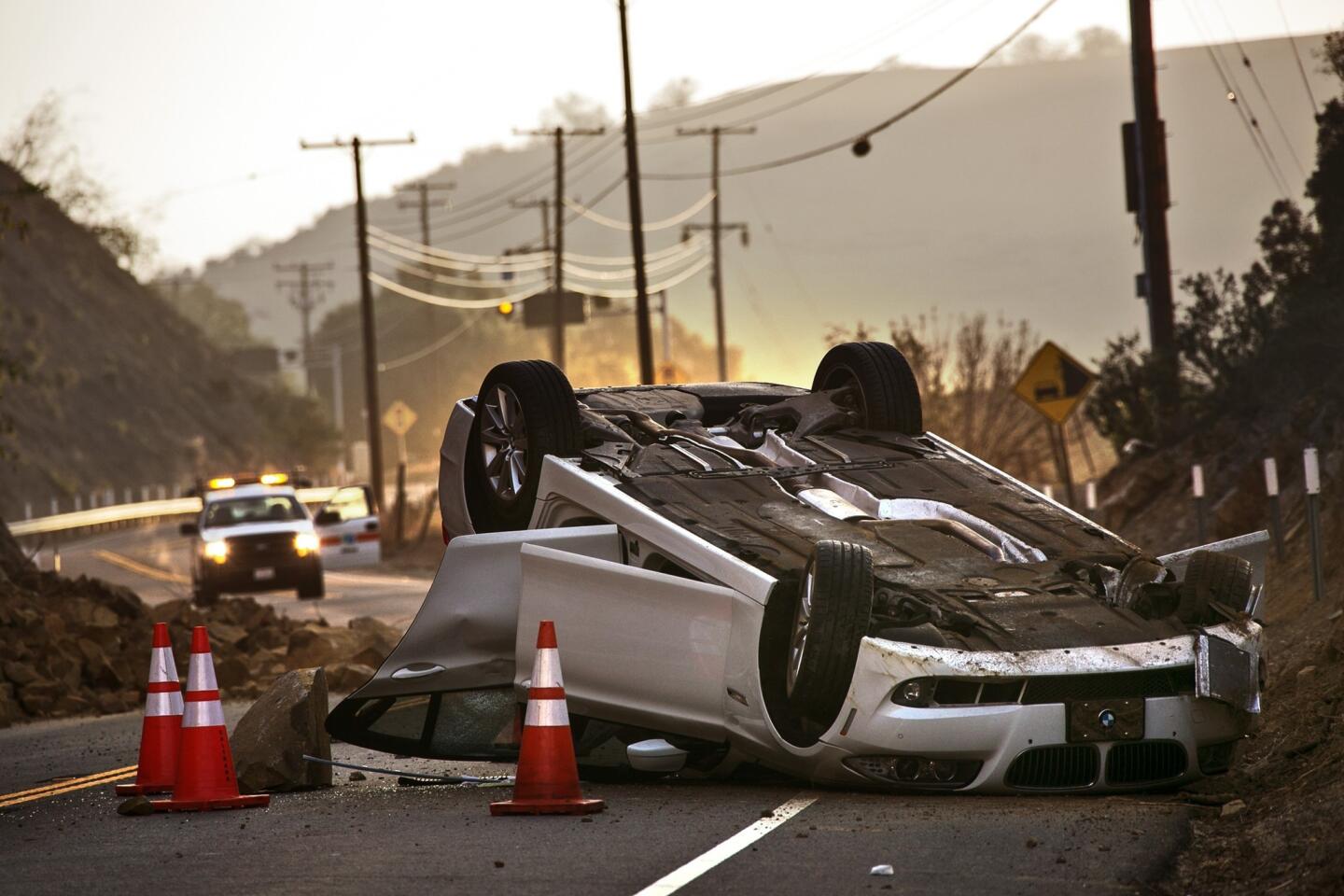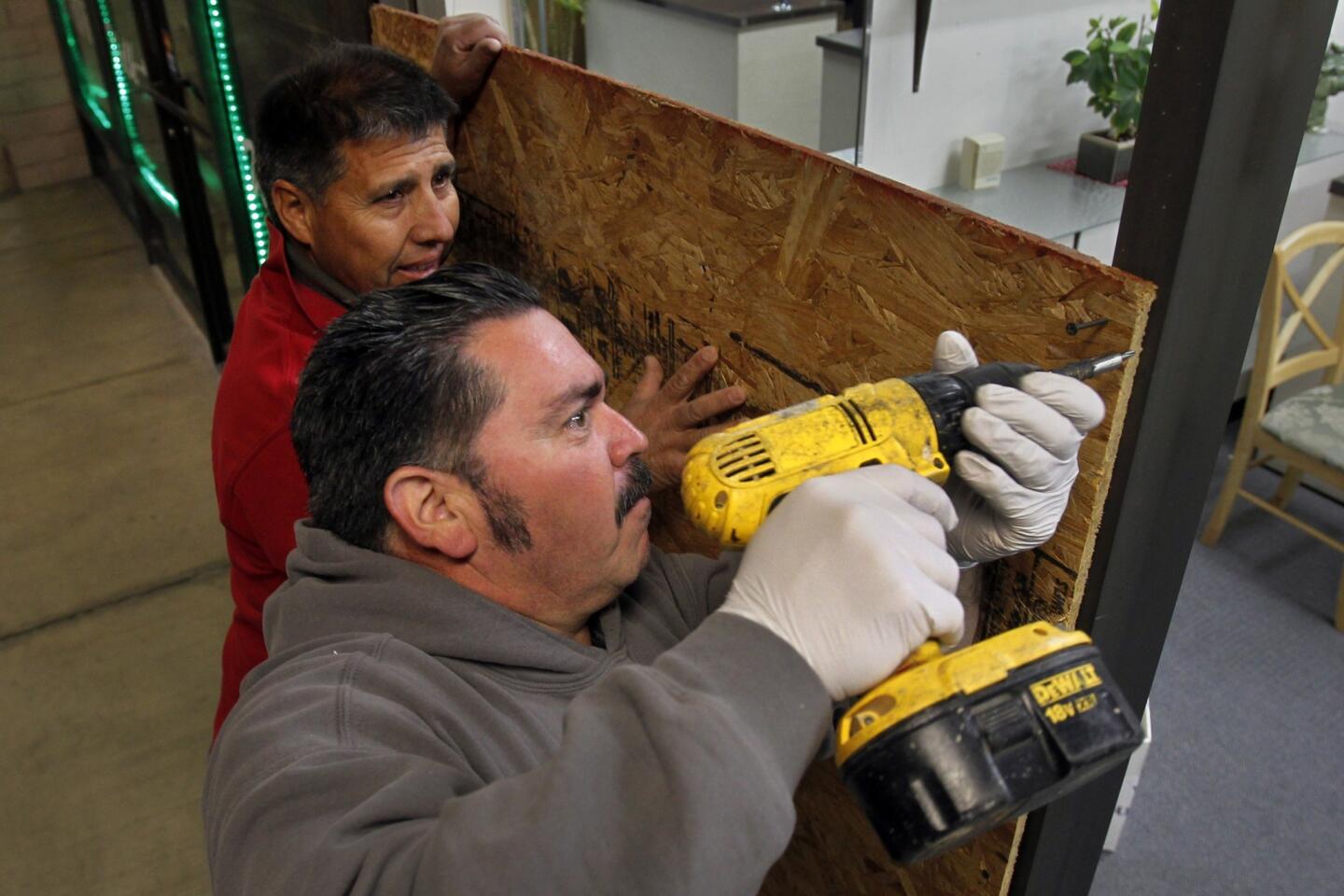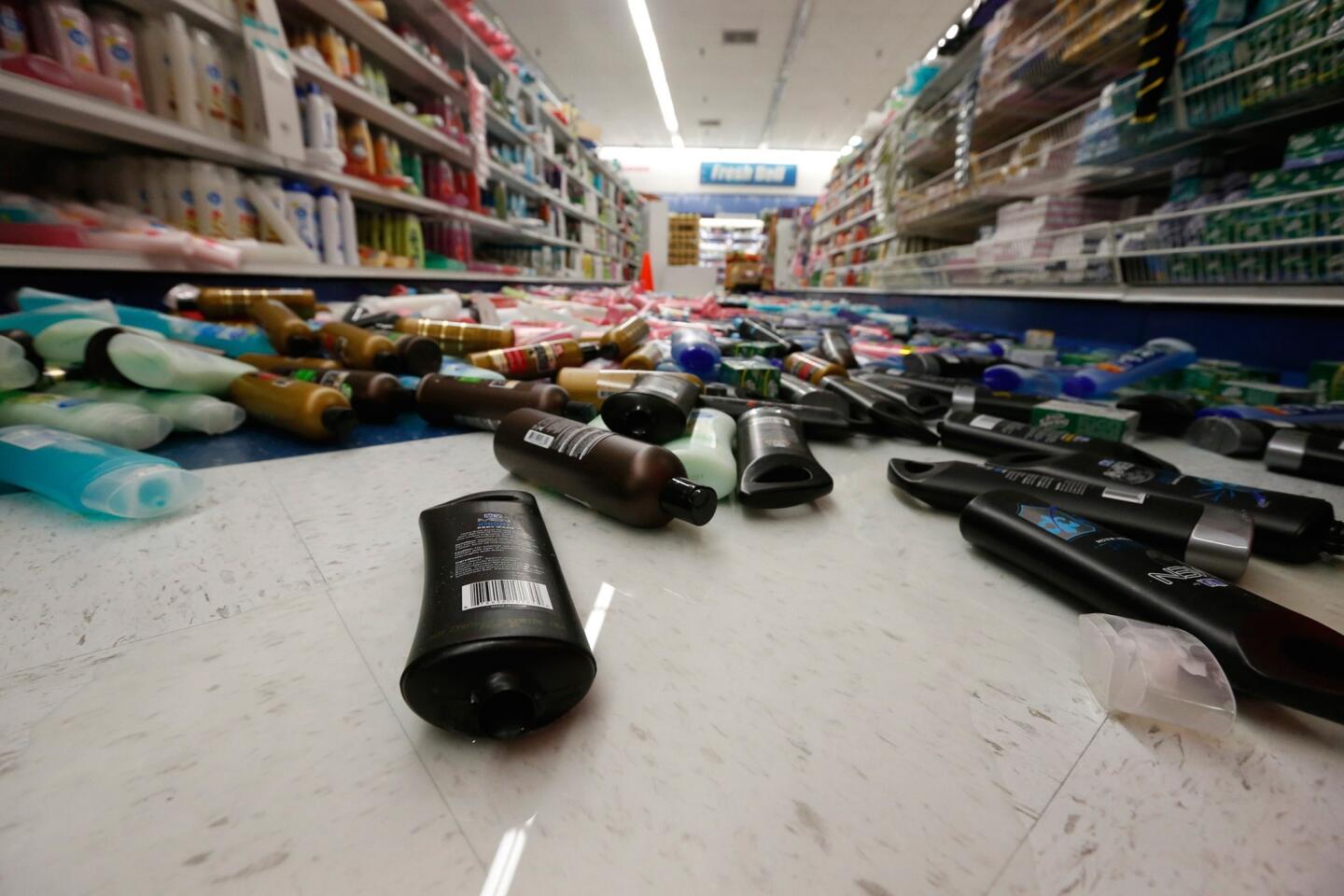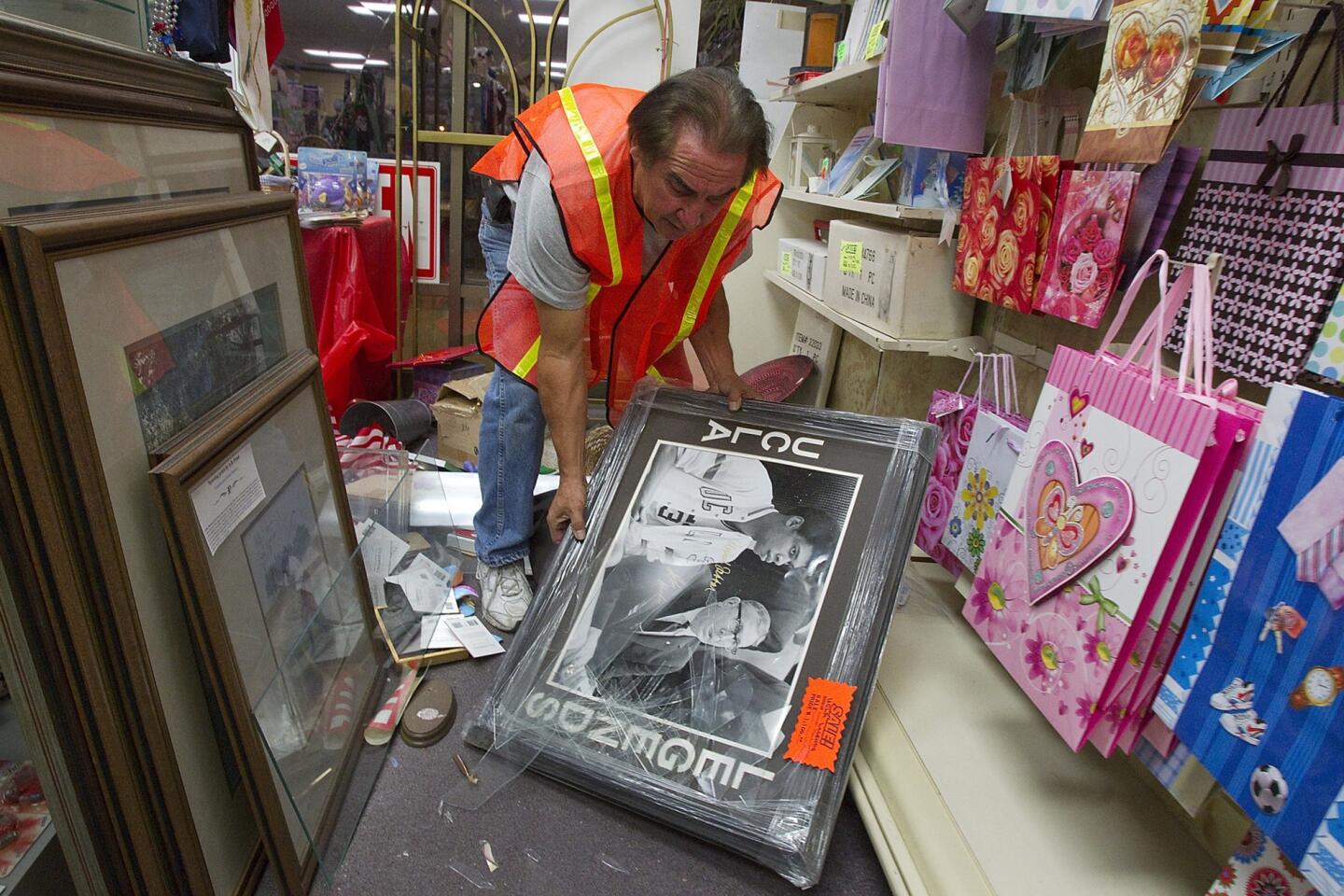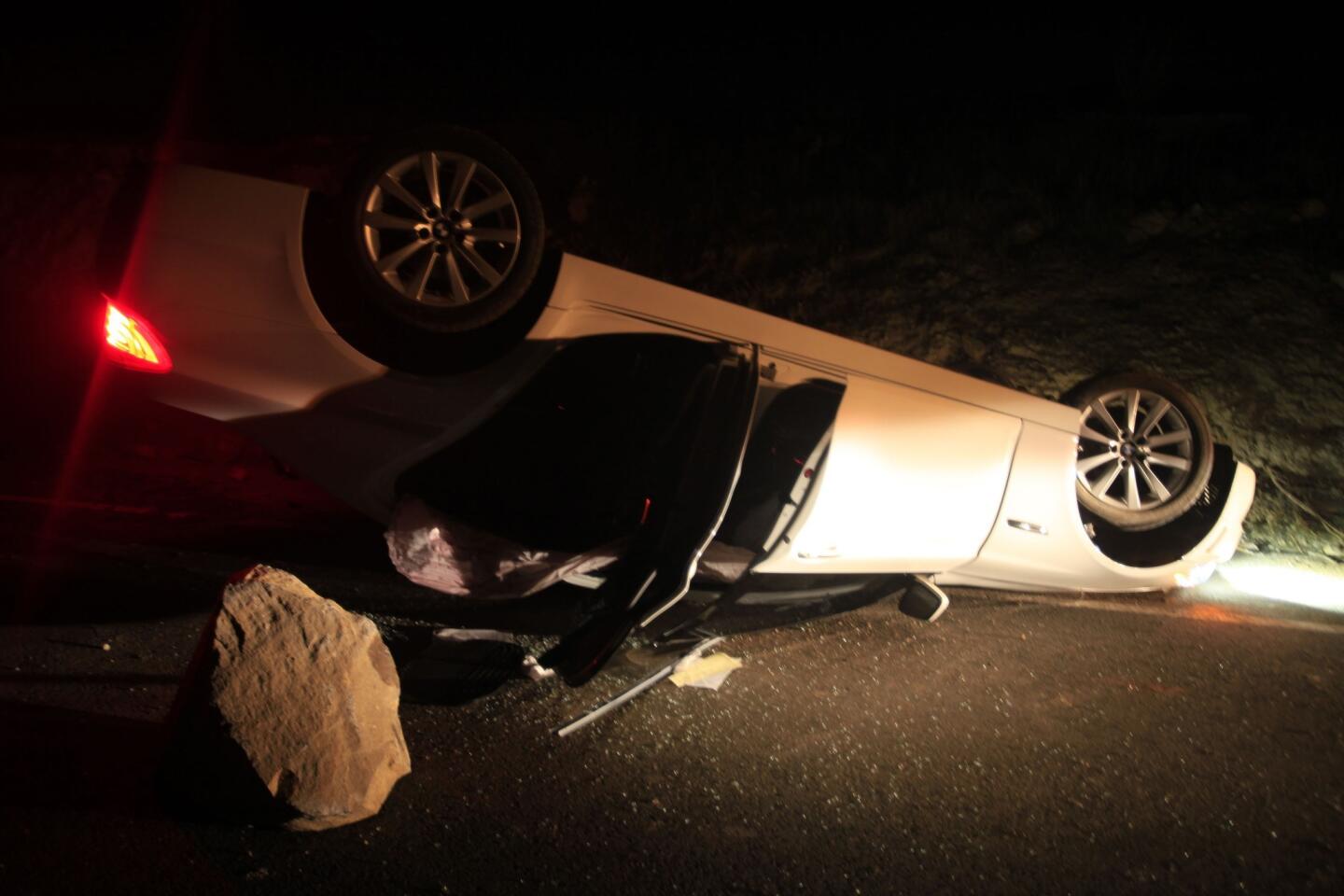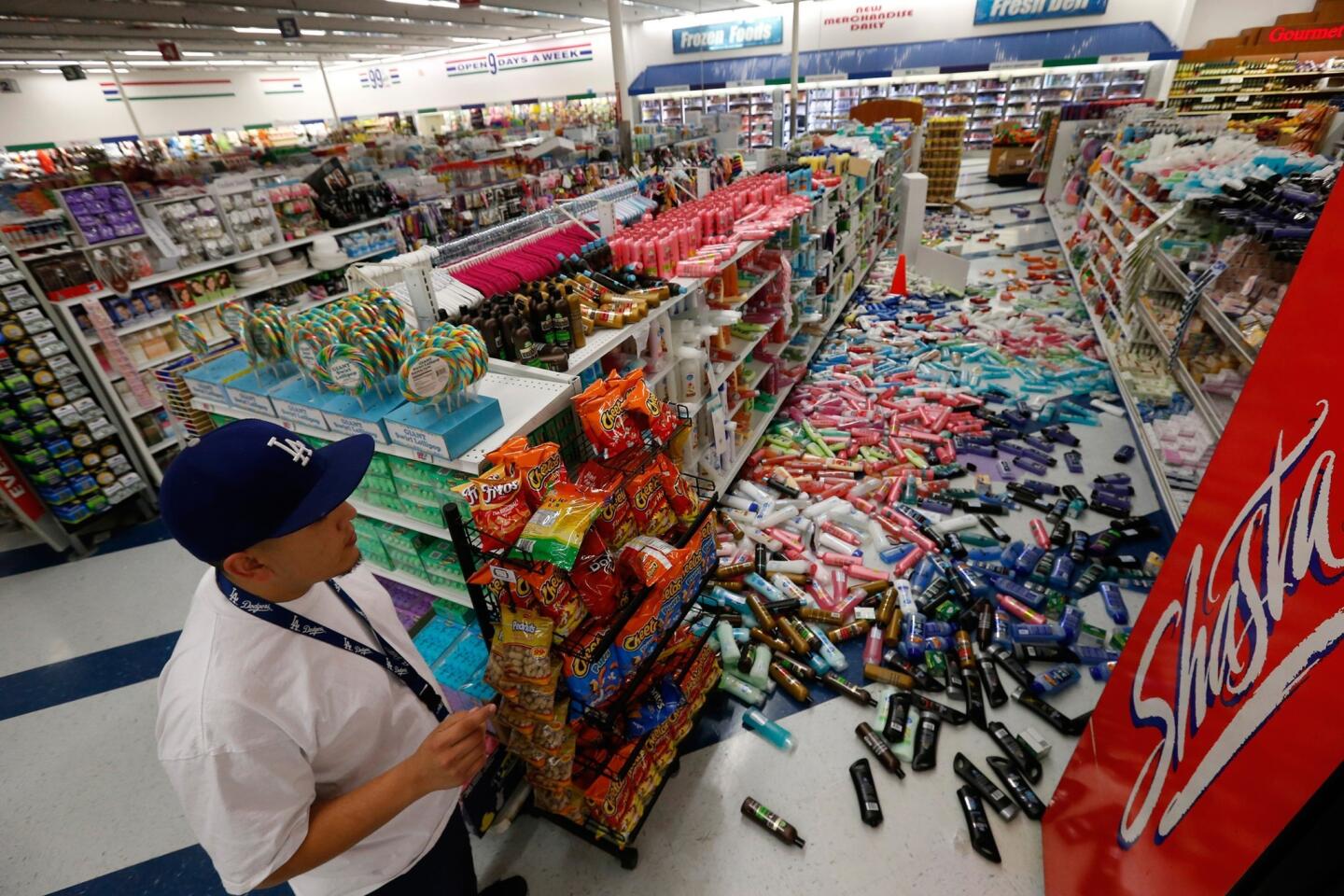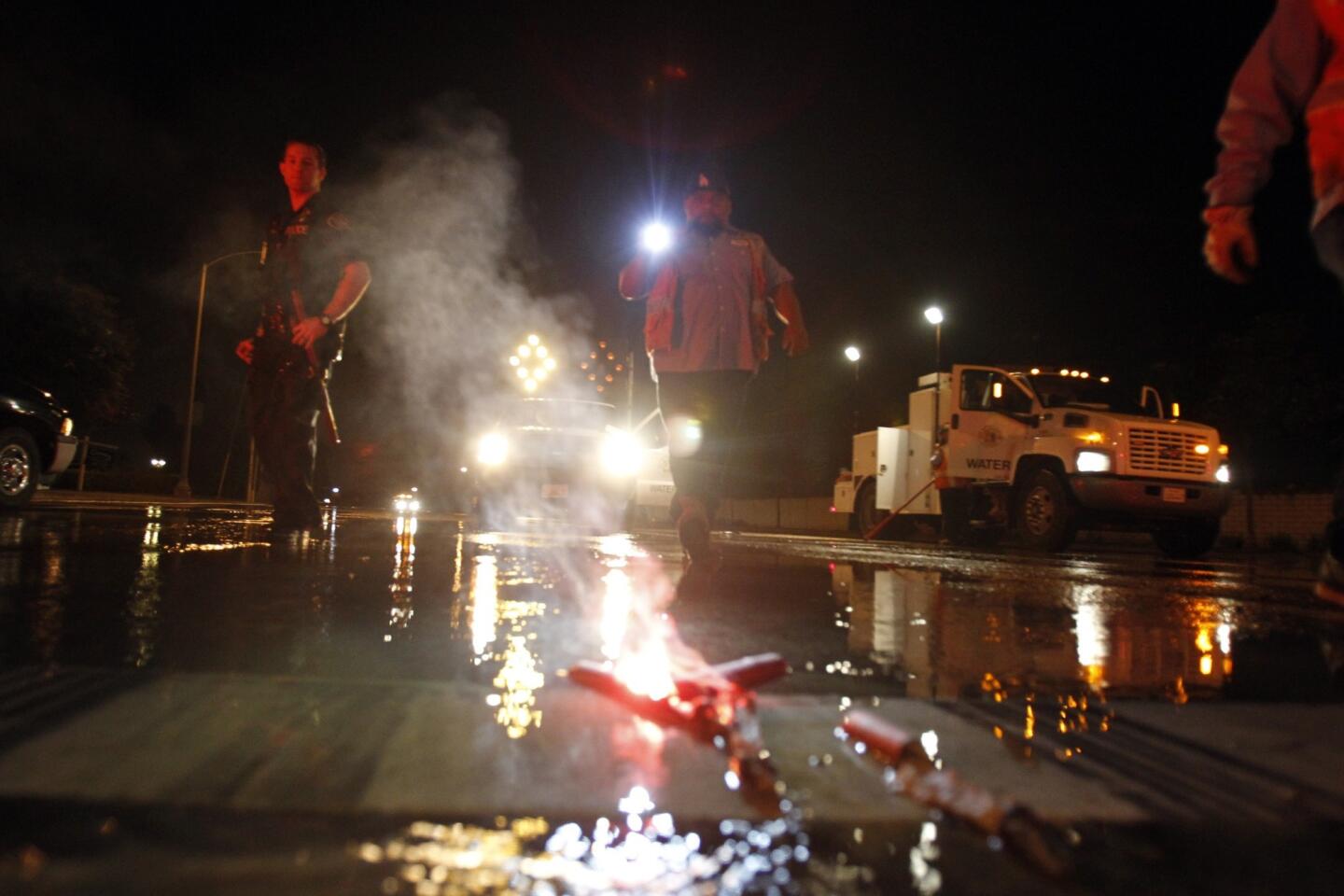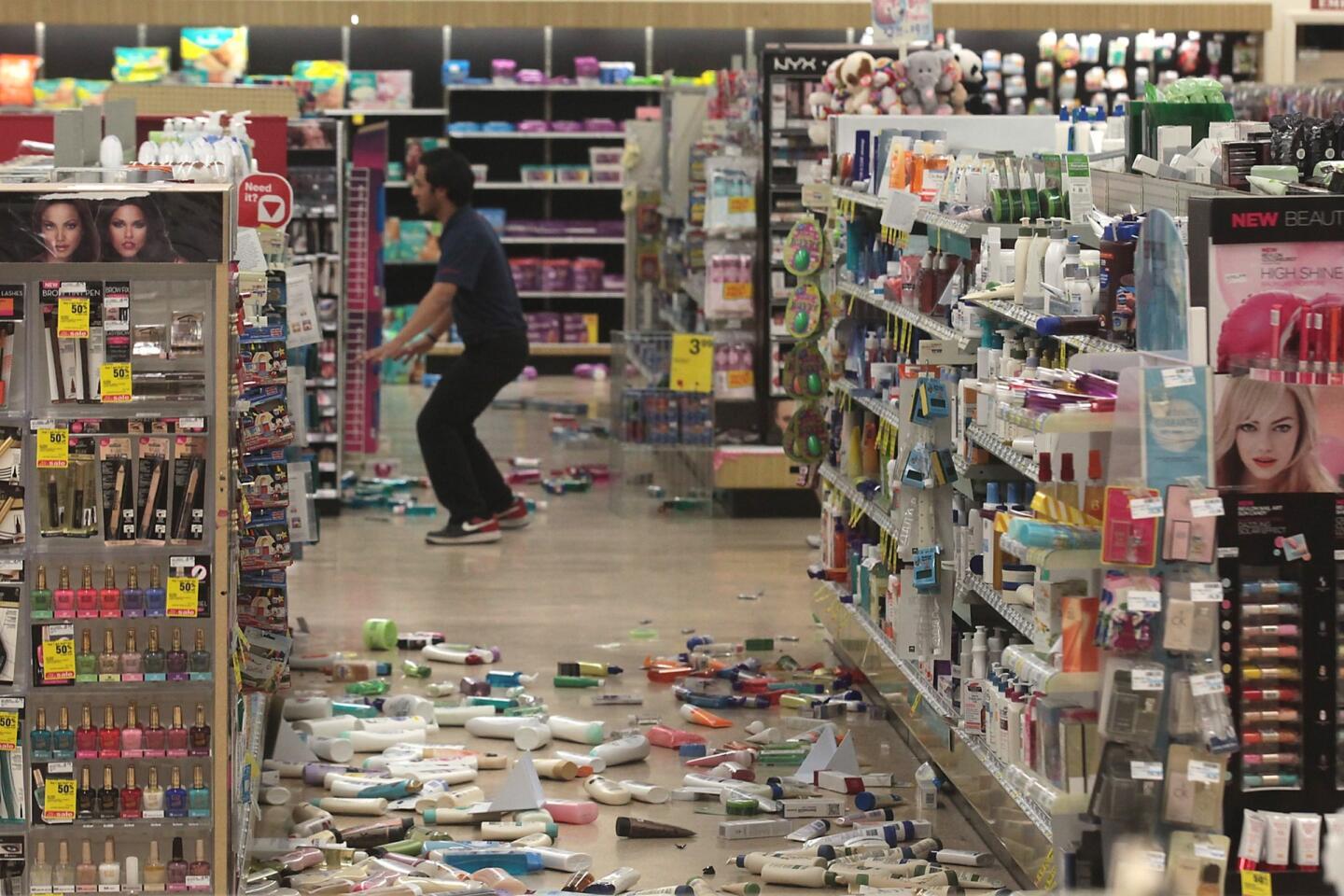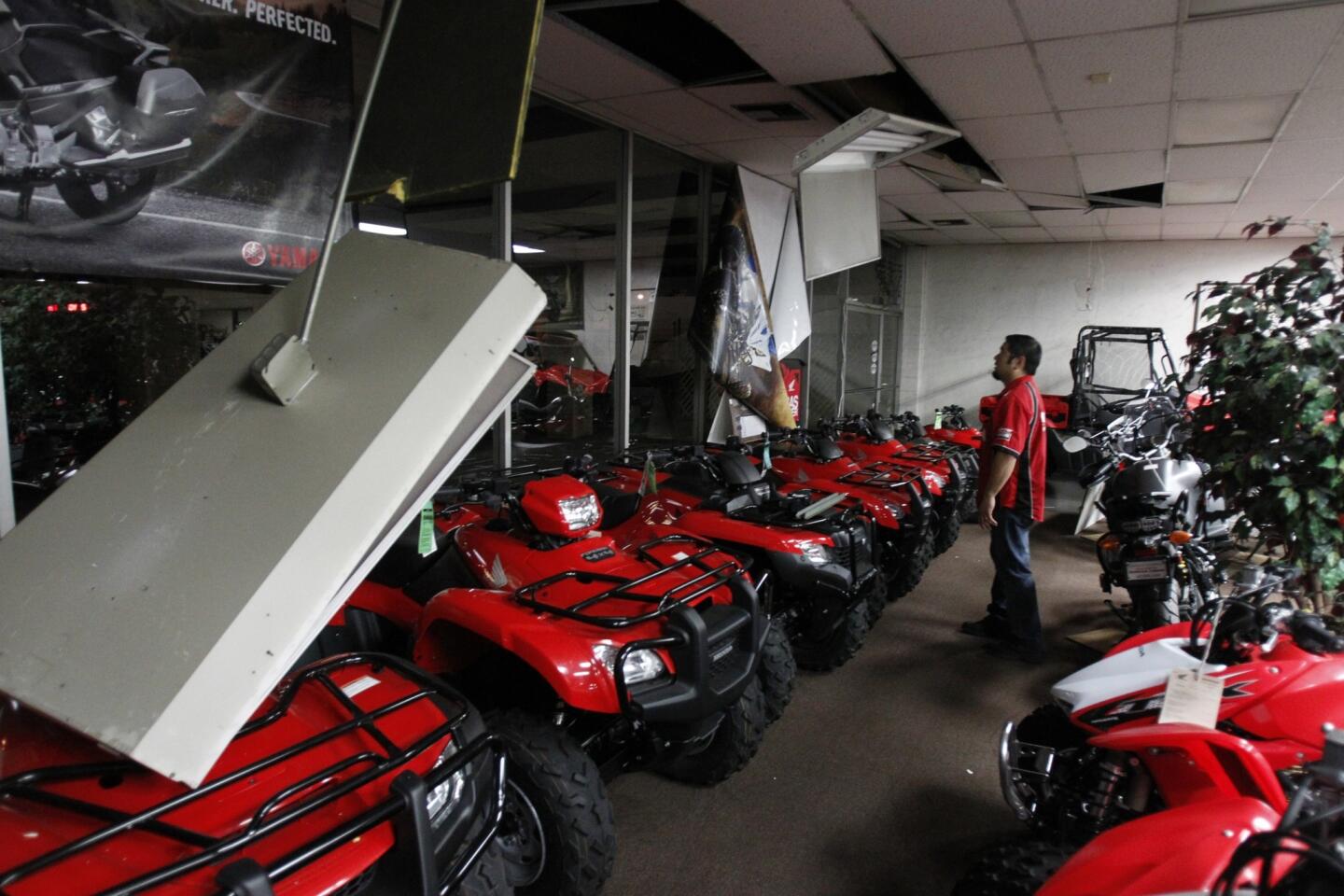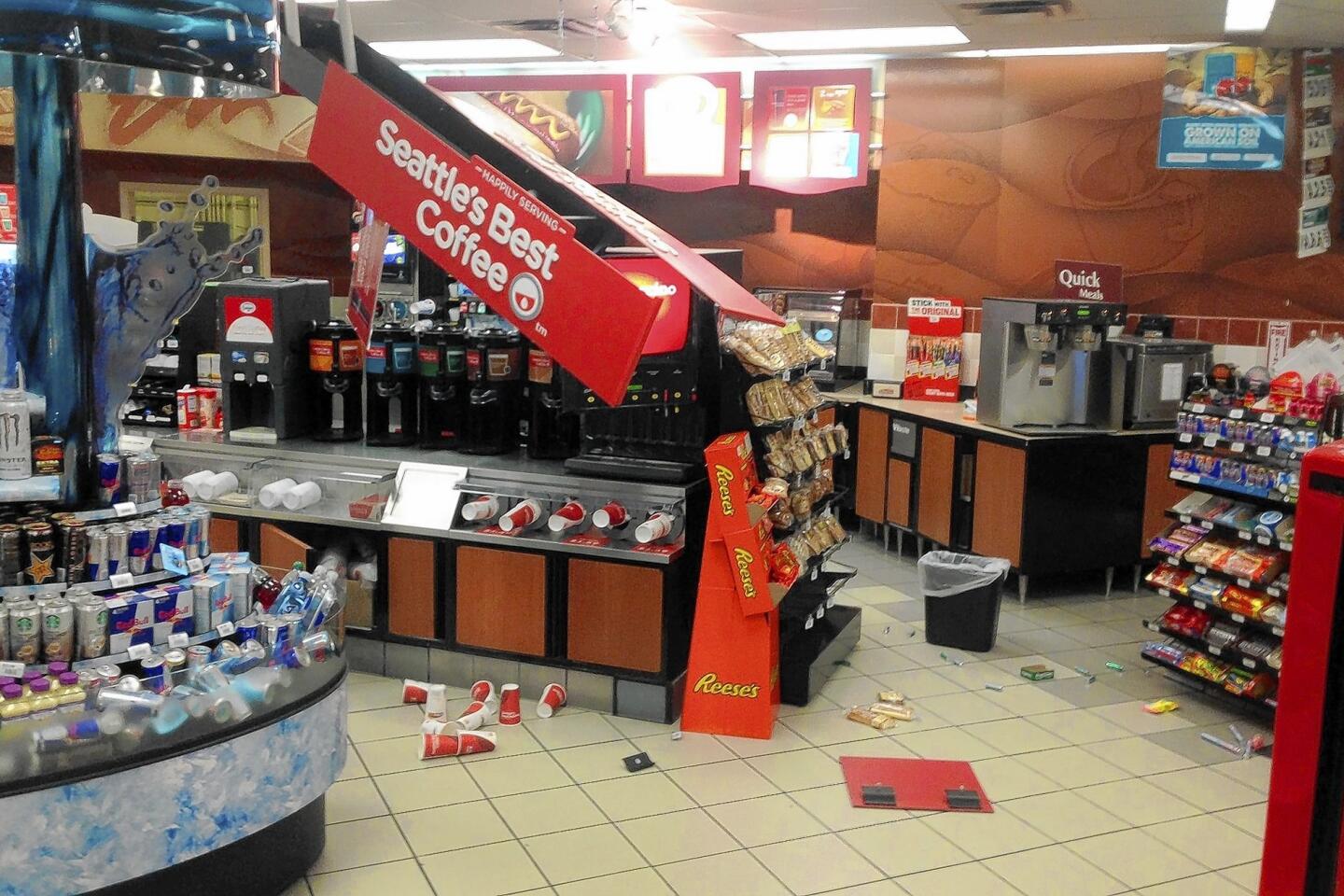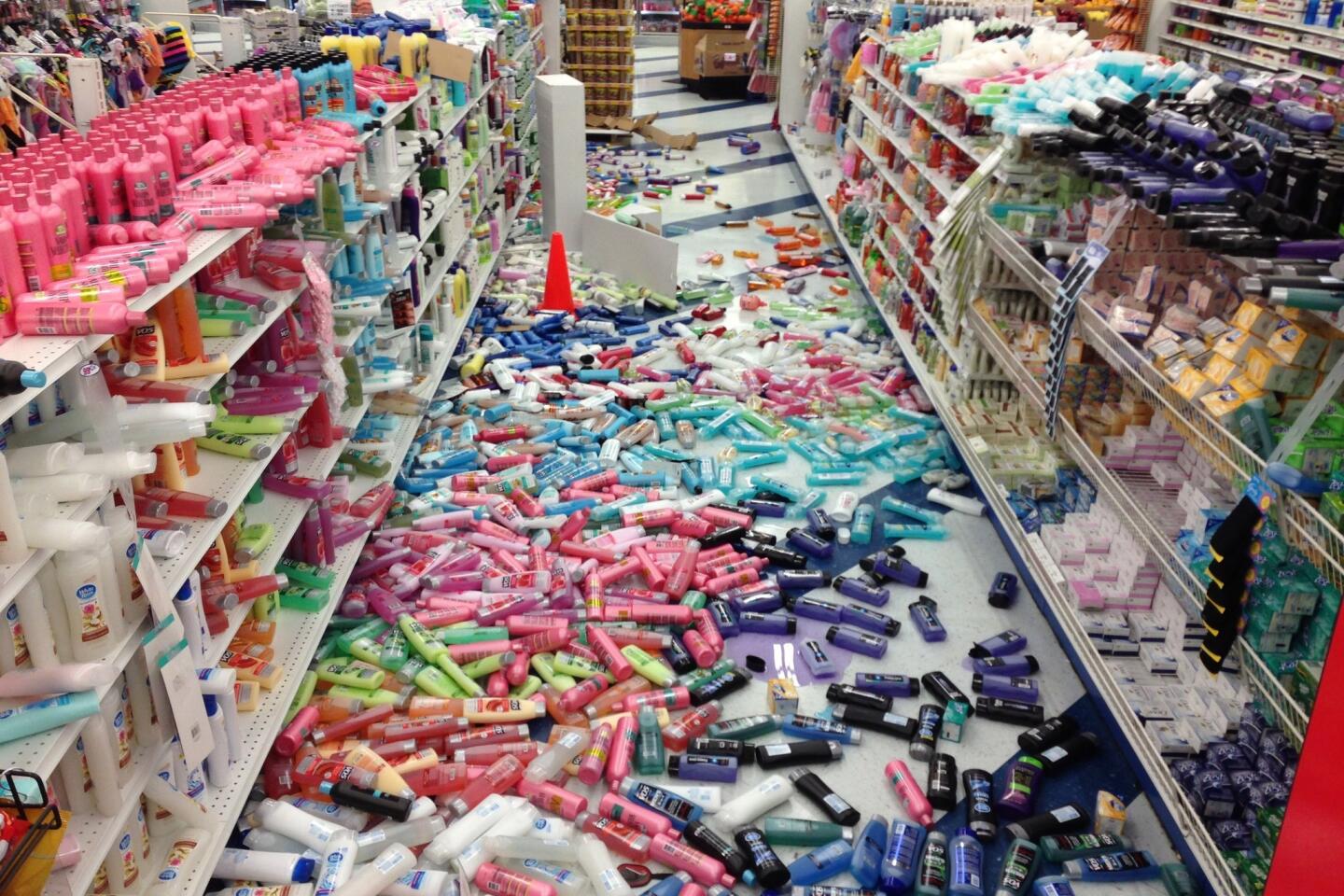Earthquakes on the brain
I’m generally not an alarmist about earthquakes. As a California native, I’ve experienced my share of small to moderate reminders that our fair state is fractured from head to toe and we’re all standing on broken plates.
But the shaking is putting me on edge lately. I find myself wondering if I should buy earthquake insurance, or why my dog is cocking his head as if he knows something I don’t.
This is partly because there’s been more rocking and rolling than usual, and partly because of what we’re learning about how shamefully unprepared we are for a Big One.
And now I have more cause for concern.
As The Times has been reporting for several months, there are dozens of unreinforced concrete buildings in the region that could be severely damaged or toppled by a Big One. But it turns out that some steel-reinforced buildings are at risk as well.
“We’ve got a study out on buildings in the 20-story range that are steel, not concrete,” said professor Thomas Heaton of Caltech’s Earthquake Engineering Research Lab. “And if you put a [magnitude] 7.5 on Puente Hills, that could be a pretty nasty situation.”
As my colleague Ron Lin reported, Friday’s magnitude 5.1 tap on the shoulder was on the Puente Hills thrust fault, a recently discovered system that runs under downtown Los Angeles. A big quake on it might be even more devastating to the center of the region than a Big One on the San Andreas fault, which is farther away. How devastating? A U.S. Geological Survey analysis estimated that as many as 18,000 deaths and $250 billion in damage would occur from a massive quake on the Puente Hills.
After reading Lin’s story, I happened to be driving down the 110 Freeway and gazing up at the clusters of skyscrapers, wondering if any of them were safe, which is why I called Heaton.
“Safe” is a word that gets him worked up because it’s hard to quantify. Every earthquake has different dynamics and affects different types of construction differently.
“All tall buildings are designed to be flexible, but here’s the rub,” Heaton said. “People talk about a building designed for an 8, as if anybody has a good idea of what the actual ground motion would be in an 8. There’s tremendous variation from one place to another.”
If you “put a really large quake under downtown L.A., 7-plus, it could be a true nightmare.”
As for steel buildings, Heaton said engineers and seismologists got a big surprise after the 1994 Northridge quake. Steel-frame buildings thought to be safe turned out to be far more brittle than anyone suspected. Heaton said that welding points that were supposed to hold firm, so that the power of the quake would be distributed through the bending of steel, instead fractured.
The standard metal used in those welds was found to be so substandard that its use was banned in Los Angeles in 1996, as The Times reported back then. But in a paper just printed in a seismological research publication, Heaton writes that most steel-frame buildings in California still have “pre-1994 brittle welds.” They were never upgraded.
“Simulations of 20-story steel-frame buildings [with the older welds] suggest that they are three to five times more likely to collapse than buildings with sound welds when intensely shaken,” Heaton wrote.
So how many of them are there?
Heaton did not have a specific number, but his article included a map of the region with triangles depicting steel-frame buildings believed to have been constructed before 1994. There are dozens of them, with concentrations in downtown and Hollywood, as well as Glendale, with a few dozen more extending west all the way to Santa Monica.
Nabih Youssef, a structural engineer with a seismic specialty, said there’s a legitimate concern about how some steel-frame buildings would handle high-magnitude quakes with extended cycles of shaking. But his take was more measured than Heaton’s.
“Are all of them going to collapse? Absolutely not,” said Youssef, who thinks buildings are more likely to fracture than pancake. He thinks a minority of steel frame buildings — those with irregular design elements, such as columns that don’t run from the foundation all the way up to the top of the building — are at the greatest risk.
Identifying and retrofitting such buildings would be extremely costly, Youssef said, and possibly displace large numbers of renters and tenants. There would also be disagreements over how to finance upgrades and who should pay. Youssef said more analysis like the kind Heaton is doing can help policymakers, engineers, bankers and building owners make difficult choices.
Once again, San Francisco is way ahead of Los Angeles in that regard. Patrick Otellini, who runs that city’s preparedness program, said the city is working out criteria for “mandatory evaluation and retrofit of low-performing steel buildings.”
Heaton is critical of the National Institute of Standards and Technology for not compiling a national bank of information on the resilience of buildings. People are generally unaware of earthquake risk, Heaton said, and educating them as to the hazards in their own buildings would lead to demands for upgrades.
He said there’s much to learn from Japan, which knows a lot about earthquakes and has much stricter seismic safety codes. And from Caltech, whose acclaimed seismology and engineering experts have demanded strict, self-imposed standards for campus buildings.
Heaton was showing me the massive columns supporting the school’s three-story astrophysics building when two of his grad students walked by. He asked Anthony Massari and Chis Janover to do the engineering math on how tall a building could be supported by columns that solid. They did some quick calculations and came up with the same answer — a 12- to 15-story building.
“It is a sure thing that if tens of thousands of Americans perish in a future urban earthquake, we will focus our attention on how we can better protect the public,” Heaton wrote in his newly published article. “Wouldn’t it be nice to do it before the disaster?”
More to Read
Sign up for Essential California
The most important California stories and recommendations in your inbox every morning.
You may occasionally receive promotional content from the Los Angeles Times.
